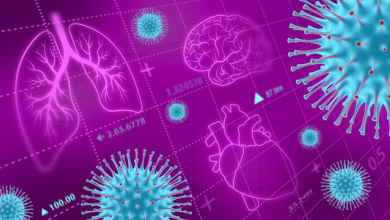Search results
Author(s):
Christos-Konstantinos Antoniou
,
Polychronis Dilaveris
,
Panagiota Manolakou
,
et al
Added:
3 years ago
Ventricular repolarization, as opposed to depolarization, is not a triggered phenomenon following an orderly sequence, hence the dissimilarity between their inscribed electrocardiographic waves; rather, ventricular myocytes repolarize at a time and rate determined by their intrinsic electrophysiological properties (relative concentration of ion channel types and isoforms), as well as by the…
View more
Author(s):
Derk Jan ten Harkel
,
Maarten Witsenburg
Added:
3 years ago
In recent years, there have been many advances in the diagnosis and treatment of arrhythmias in children. This paper focuses on some of these advances, and gives an overview of relevant studies. Special attention is paid to technological advances that have created the possibility of using devices like an implantable loop recorder or an implantable cardioverter-defibrillator (ICD) in even small…
View more
Author(s):
Alessandro Marinelli
,
Mario Luzi
,
Alessandro Capucci
Added:
3 years ago
Several randomised controlled trials (RCTs) have proven the efficacy of the implantable cardioverter-defibrillator (ICD) in preventing sudden cardiac death (SCD) in patients with advanced systolic heart failure (HF) and reduced left ventricular ejection fraction (LVEF).1–3 ICD therapy proved to be efficacious also in other conditions at high risk for arrhythmic death such as familial SCD…
View more
The Place of Antiarrhythmic Drugs and Rhythm Control in the Treatment of Atrial Fibrillation
Author(s):
Philippe Chevalier
Added:
3 years ago
Article
Author(s):
Jan Peder Amlie
Added:
3 years ago
Conduction and depolarisation in the heart have always interested clinical electrophysiologists. The mapping of conduction is performed more and more in laboratories. Much less attention has been paid to the repolarisation process, although interest in this is increasing.
The repolarisation phase is of great importance for malignant arrhythmias. It is carried by many ionic movements and can be…
View more
Phillip Cuculich
Author
Author(s):
Rachel Lampert
Added:
3 years ago
The increased risk of drug-related torsades de pointes (TdP) and death in women taking ion-channel-active antiarrhythmic drugs was first described 20 years ago. In 1993, Makkar1 identified all case reports or case series of drug-related TdP, finding 332 patients described in 83 articles. The proportion of women versus men in these reported series was compared with the proportion of women versus…
View more
Author(s):
Antoni Martínez-Rubio
,
Soledad Ascoeta
,
Fadwa Taibi
,
et al
Added:
3 years ago
In the last months of 2019 and the beginning of 2020, a novel disease appeared, caused by severe acute respiratory syndrome coronavirus 2 (SARS-CoV-2), a very contagious virus, which causes coronavirus disease 2019 (COVID-19). The clinical manifestations of this virus in humans vary widely from asymptomatic to severe, with diverse symptomatology and even death. The substantial transmission from…
View more
Author(s):
Lars S Maier
,
Gerd Hasenfuß
Added:
3 years ago
Current Therapeutic Strategies in Stable Angina Pectoris
Current strategies of drug-induced relief of symptoms in patients with coronary heart disease aim to improve the imbalance between oxygen supply to the heart and oxygen demand, which is well known to be relevant for myocardial ischaemia and hence angina pectoris.1 The agents that reduce myocardial oxygen demand are mainly beta-blockers,…
View more












